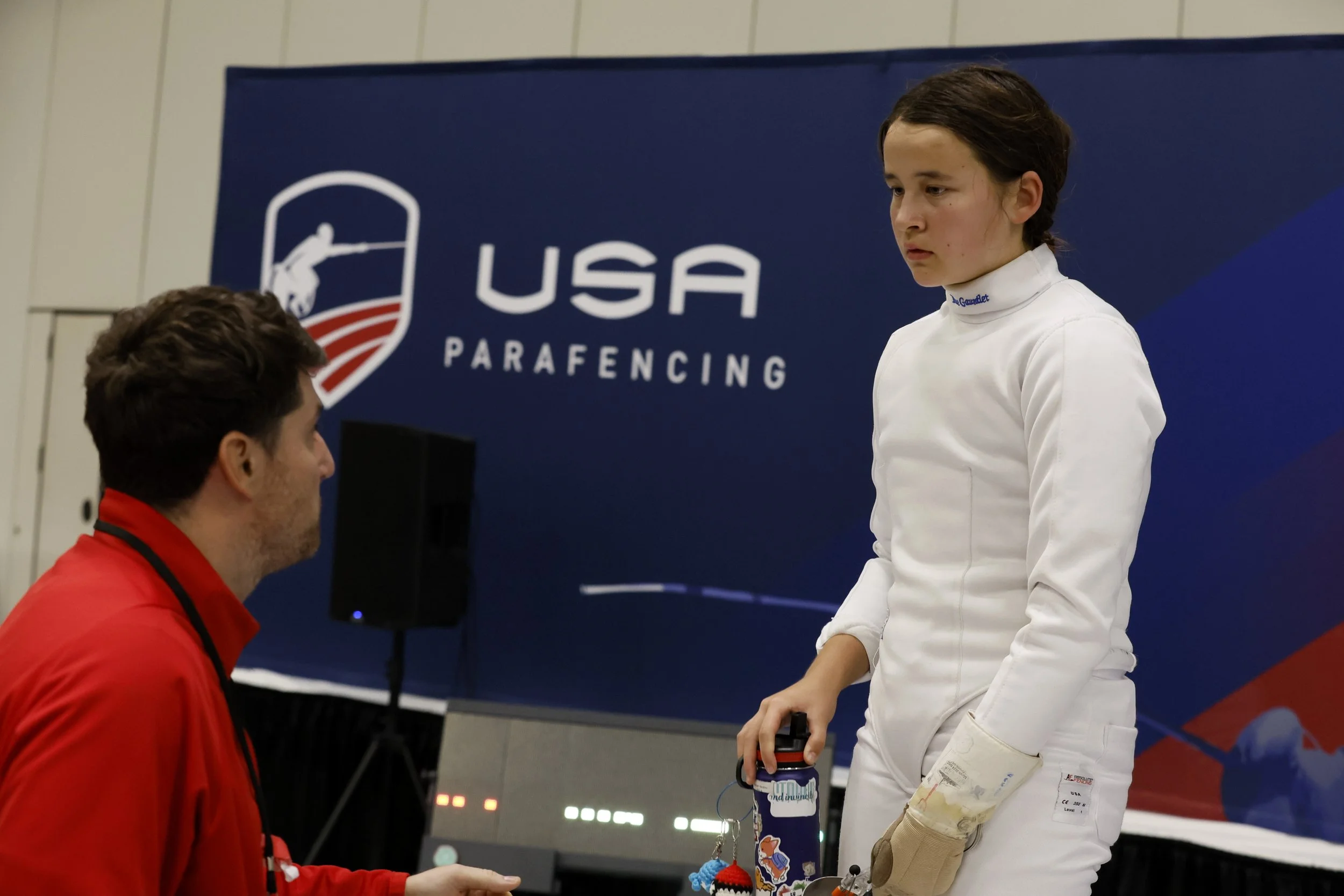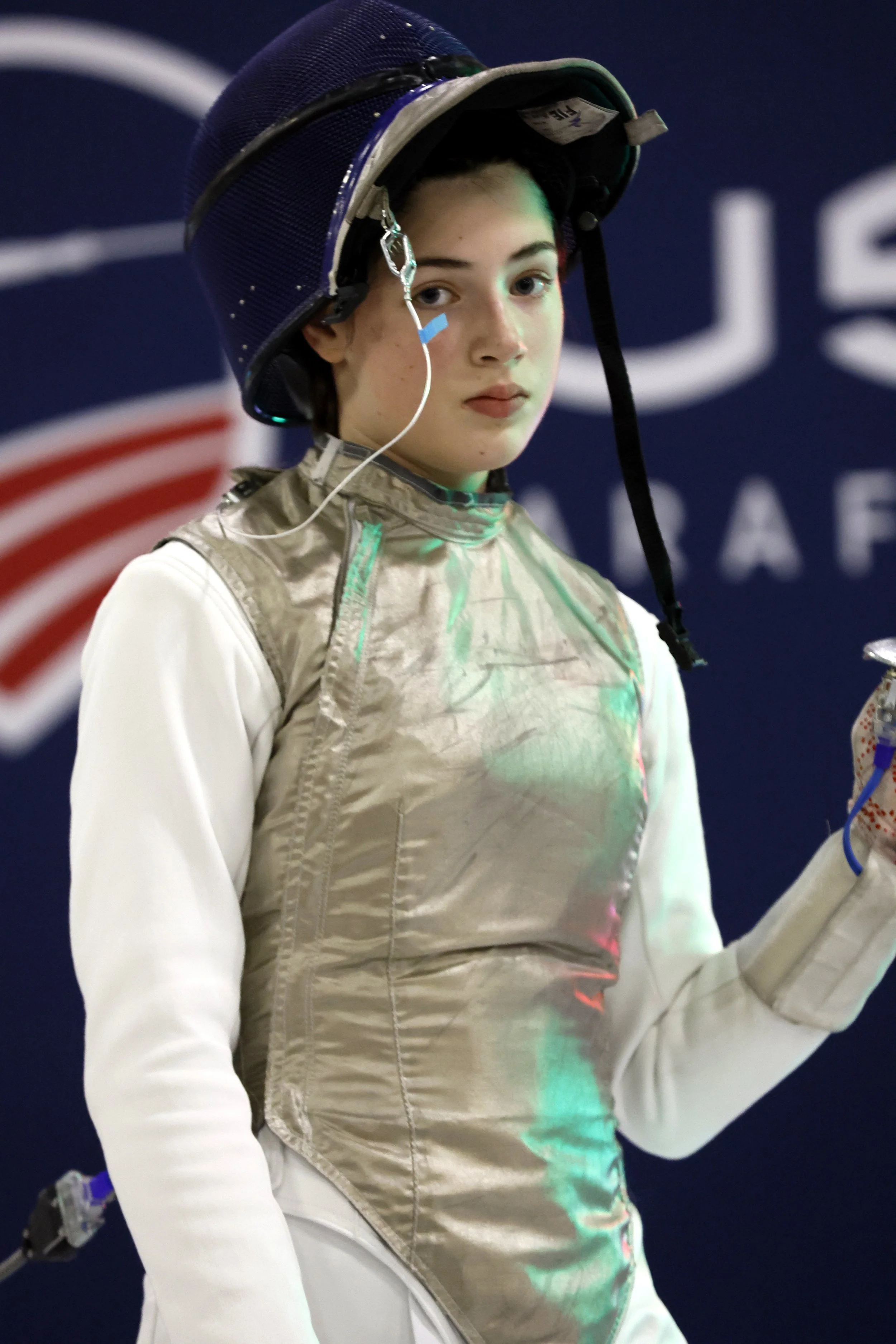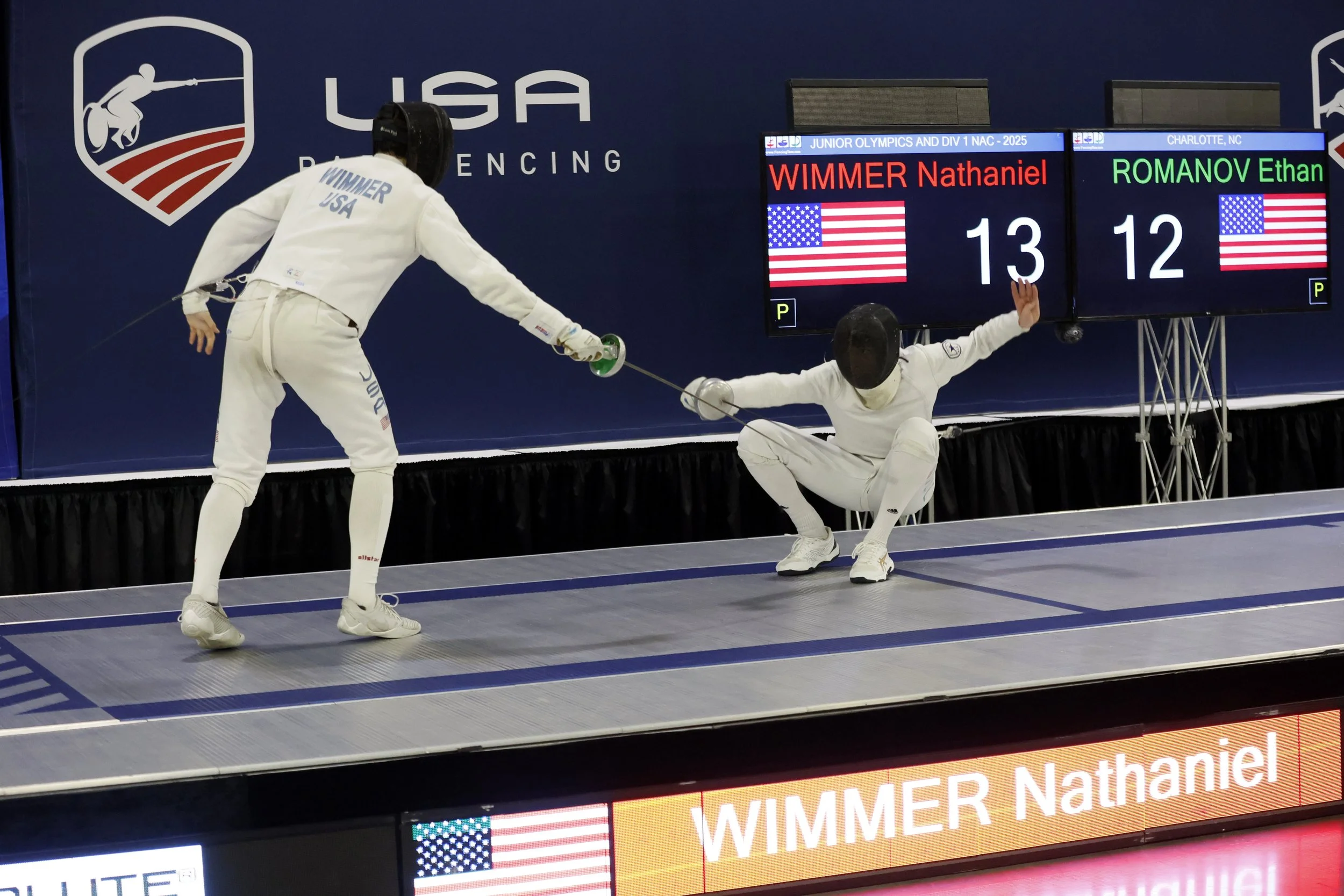Youth Fencing: Expectations vs. Reality
Igor Chirashnya
Editor’s Note: We’re in a busy youth fencing season, with the recent March Cleveland NAC that included Y10, Y12, Y14 and Cadet events that followed the February Junior Olympics in Charlotte. We’ve also had international youth events, including the recent Pan American Cadet and Junior Championships, and this week several of our top young fencers will be trekking to Wuxi, China for the 2025 Junior and Cadet Fencing World Championships. Of course, Summer Nationals, with all of its youth events, is looming large on the horizon in late June/early July in Milwaukee, Wisconsin. This article delves into setting proper expectations for all these aspiring young athletes.
Igor Chirashnya, our Parents’ Corner columnist, is the COO and co-founder of the Northern California-based Academy of Fencing Masters, one of the USA’s largest clubs. He is a fencing parent himself, and on the AFM site writes a prolific blog about various aspects of fencing.
Do you have a specific expectation when putting a child into a fencing school? That they will leap forward and become great Olympians? How about the kids – they have expectations, too. Will they learn how to be Inigo Montoyo and fight with swagger a la The Princess Bride?
Youth fencing, like many other extracurricular activities, can sometimes have a disparity between expectations and reality, for both parents and kids. Bridging the gap between what we think will happen and what really does can be a hard lesson to learn.
The beautifully, wonderfully true fact of fencing is that in many ways the reality is better than the expectation, that is if you can meet the sport and its possibilities where they’re at. Our lived experience is far more real than any dream we might have, and holding a sword while pushing yourself to grow is very fulfilling.
Sometimes the best way to appreciate reality is to burst the bubble of those expectations. This can help us to let go of the unrealistic notions and instead find fulfillment in what we are really experiencing.
Expectation: Fencing is all about flashy moves and dueling like in the movies.
Reality: Fencing goes too fast for anyone to care about flashy moves
Up on that strip, there’s no time for us to mess around and swing our swords in big curves. It’s just not practical and overall, it’s an excellent way to lose a match. We hold our bodies in a controlled way, and we don’t roll around or turn our backs on the opponent – ever. There are no backflips or headlocks in fencing.
While fencing can be an exciting and dynamic sport, it is also highly technical and strategic. Fencing matches involve quick footwork, precise blade work, and tactical decision-making. It requires discipline, practice, and a strong understanding of the rules and techniques. And yes, unlike in the movies there are rules that dictate how scoring works. Lots of them. And also there are safety rules. They keep us safe, because this isn’t a movie and we don’t want to actually injure someone.
The biggest bubble that I see bursting with new fencers is the realization of just how incredibly fast the sport is. There’s a steep learning curve for fencers to understand how to slow down time in their minds to see what’s going on in a lightning-fast match. Unlike in a movie, you can’t always tell clearly when someone gets a point. It’s not like when the good guy slices the bad guy with their sword and the bad guy crumples to the ground. Hitting your opponent isn’t easy, and when you do it might not mean anything if you don’t hit them in the right place or with the right timing!
Expectation: Instant success and mastery of the sport.
Reality: Fencing, like anything, takes time and effort to master.
There is no such thing as an overnight success. The best fencers in the world didn’t just show up to the club and pick up a sword to incredible skill. Yes, there are people who slide into fencing with some natural ability and thus have an easier time of it. But it’s a wrong expectation that they magically start winning. It requires consistent training, patience and dedication, no matter how easily it comes to you.
Progression in fencing skills can be gradual, and it’s important for young fencers to set realistic goals and enjoy the process of improvement rather than expecting immediate success. It literally takes years of training to get to the point where you feel like you have control over the blade, and then it’s more of a comfort in knowing you don’t have as much control as you thought you did.
Rather than feeling beaten down by this, we must help young fencers cultivate a joy in training so they feel the real value in themselves. You don’t have to be perfect or have some kind of miraculous mastery of the sport from the outset to find deep joy and fulfillment in it! The progress is gratifying on its own.
Expectation: Winning is everything.
Reality: Winning means almost nothing.
There is that beautiful moment on the podium when a person has that gold medal placed around their neck. It’s the thing we identify most from the Olympics, the instant in which a person becomes a champion. Are they really different now than they were two days before?
While winning is a natural desire in any competitive sport, it’s essential to focus on personal growth and development rather than solely on winning. Winning is a blink, it’s a brief point in time, it’s a fleeting breeze making you feel good for a little while, but then fades as you pursue the next win and the next.
Fencing offers valuable life lessons such as sportsmanship, perseverance and learning from both victories and defeats. It’s never been about whether you win or lose a match, even though we do still count the points. Anyone who has fenced for a while will tell you that because we fence so many matches, losses are inevitable. The constant churning of competition, with its constant rhythm of winning and losing, is part of how this sport develops us.
Encouraging young fencers to enjoy the sport, set personal goals and appreciate the learning experience can lead to a healthier and more rewarding fencing journey. The journey is what they will experience day-in and day-out, not the podium. If they can find joy in practice, the success in terms of the numbers will come around on its own. Or it won’t, and it won’t matter. Learning to detach from the outcome will save kids a huge amount of heartache while also filling their cup with positive experiences during their daily lives.
Expectation: Fencing is a solo sport.
Reality: Even if you’re doing individual fencing, it’s still never just you.
Fencing can be perceived as an individual sport due to the one-on-one nature of matches. However, it also offers opportunities for team competitions, club training and camaraderie among fencers and throughout the club. Many fencers find a supportive community within their clubs and enjoy the social aspects of the sport.
Even when we look at it from the perspective of individual sport, you are always with your opponent. You cannot fence alone, even if you wanted to. There are some sports like swimming or track and field where you can run against your best time and try to beat the clock, because these are defined by something outside of another person. Fencing is more like tennis or soccer – you must have other people for it to work.
Team fencing, practiced in many clubs sessions and included in national and international competition, offers a wonderful way to weave individuals together. The interplay between multiple fencers when they are going against each other, with the camaraderie and teamwork, ups the game in wonderful ways.
Expectation: Fencing is only for the physically strong.
Reality: Fencing is as much about the head as the body.
Fencing is a sport emphasizing technique, agility and strategy, rather than relying solely on physical strength. All kinds of people can be successful because there is no “ideal body” for this sport. Fencing allows athletes to lean on their unique strengths and attributes to succeed. Height will not give you an advantage, and just about everything can be compensated for.
While physical conditioning is important, fencers of various body types and strengths can excel by adapting their techniques and playing to their strengths. Just look at the latest Paris 2024 Olympics – two of the shortest fencers on the circuit, USA’s Lee Keifer in women’s foil and Japan’s Koki Kano in men’s epee became Olympic champions! You learn to meet your opponent where they’re at, combined with your skill level and needs. It’s remarkable to observe fencers take on opponents who look formidable, only to then take them out. Unlike many other sports, you cannot tell who will win a match based their physical appearance alone, not at all. The brain is more important than the body in fencing.
Expectation: Fencing is an expensive sport.
Reality: Fencing costs are comparable to other competitive club youth sports.
As in any youth sport, fencing can become expensive, especially at higher competitive levels. However, a closer look reveals the reasons for these expenses are different from what many people assume, and the overall costs are comparable to other competitive club youth sports.
The cost of fencing can be broken down into several categories:
Training: This includes group lessons, private lessons, camps and potentially open fencing fees. The cost varies widely depending on the fencer’s level and the frequency of training.
Equipment: There’s an initial investment in gear, but this expense is amortized over several years as quality equipment tends to last. It’s often less daunting than it first appears when broken down monthly.
Competitions: Costs increase as fencers progress from local to regional, national and international competitions. This includes registration fees, event fees and often strip coaching fees.
Travel: As fencers advance, travel expenses for competitions can increase significantly, especially for national and international events.
All factors considered, the annual cost of fencing can range widely from recreational to highly competitive levels. However, it’s crucial to understand the higher expenses are reached gradually over years of progression in the sport.
Importantly, these costs compare with other individual sports like gymnastics or tennis. The perception of fencing as an exceptionally expensive sport often stems from its niche status and the visible upfront equipment costs, rather than from the overall expenses being significantly higher than other competitive youth sports.
For families considering fencing, it’s essential to start at a comfortable level and progress as desired. Many clubs offer introductory programs allowing newcomers to try the sport with a minimal initial investment. As with any sport, costs can be managed by choosing the level of involvement that fits your budget and goals.
While fencing can become expensive at higher competitive levels, it’s not inherently more costly than other serious youth sports pursuits. The key is to understand the cost structure and make informed decisions about the level of participation that works for your family.
Mindset is a big part of youth sports
It’s important to approach youth fencing with realistic expectations, focusing on personal growth, enjoying the process and embracing the challenges that come with the sport. There are many moving parts with any youth sport, but it must always come back to helping children enjoy their activities and grow through them.
By bringing ourselves down to earth, we can find joy in what we’re doing. Aligning fantasy with reality might not sound glamorous, but it’s ultimately fulfilling – for kids and for parents.
Photos: Serge Timacheff 2024/2025










